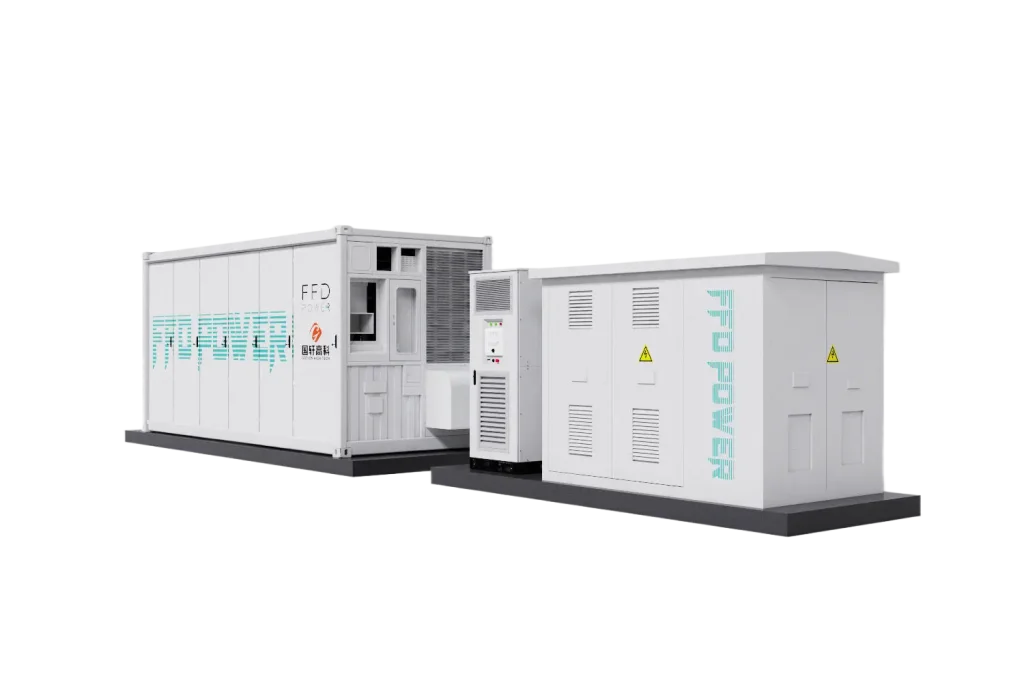FCR and aFFR
For Grid balancing
FCR Frequency Containment Reserve
FCR is a key grid service that maintains system stability by responding to frequency deviations automatically.
It acts as the first defense when electricity supply and demand become unbalanced. This can occur during sudden generation loss or demand spikes.
FCR activates within seconds. It contains frequency fluctuations, keeping the grid within safe limits, typically around 50 Hz or 60 Hz.
It works by adjusting the power output of generators or the consumption of large loads. The adjustment depends on the size of the frequency deviation.
This rapid response prevents grid instability, reducing the risk of blackouts or other failures.
FCR operates over short periods. It keeps the system stable until slower reserves, such as Automatic Frequency Restoration Reserve (aFRR), restore balance.
Both traditional power plants and flexible energy resources, like batteries, provide FCR. This enhances overall grid resilience and reliability.
FFD POWER Peak-Valley Solution

Concentrated DC coupling BESS
FFD Power’s containerized BESS has a nominal capacity of 3.42 MWh. Charging and discharging power ranges from 1250 kW to 1725 kW.
The system is scalable from 3.42 MWh up to 102.6 MWh. It suits medium to large industrial users and grid operators.
This BESS is ideal for peak-valley arbitrage and other energy management strategies.
Batteries are separated from the Power Converting System (PCS). This allows easy scalability by connecting multiple systems in parallel.
The design is compact and cost-effective. It maximizes efficiency and delivers significant energy cost savings.
System design

Why FCR is Different
Frequency Containment Reserve (FCR) is essential for maintaining grid stability. It requires precise and rapid response capabilities.
Unlike other applications, FCR focuses on real-time grid balance rather than just energy optimization or integration.
Managing FCR is complex. It requires specialized technology and advanced algorithms to respond instantly to frequency deviations.
Our Ready-to-Use FCR Solution
FFD Power simplifies FCR complexities with our Energy Management Architecture (EMA) and Kehua’s Power Conversion System (PCS).
The solution is turnkey and pre-installed, providing all components needed for effortless FCR implementation.
It ensures seamless operation, compliance with grid standards, and reliable support for critical grid stability.
Technical Features
Frequency ranges
47.5 Hz – 49.0 Hz More than 30 minutes
49.0 Hz – 51.0 Hz without limitation
51.0 Hz – 51.5 Hz More than 30 minutes
Resistance to the rate of change of frequency
Able to remain connected to the grid and operate at a frequency change rate of up to 1.7 Hz / s
Limited Frequency Sensitivity Mode - High Frequency (LFSM-O)
1. Frequency-Responsive Active Power Adjustment
The BESS adjusts active power when grid frequency deviates beyond the insensitivity zone.
The insensitivity zone is adjustable between 50.2 Hz and 50.5 Hz, allowing precise power regulation outside this range.
2. Adjustable Static Settings
Active power adjustment settings are configurable from 0.1% to 12% via the Energy Management System (EMS).
This flexibility ensures optimal response across diverse grid conditions.
3. Fast Response Time
The system reacts to frequency deviations within 500 milliseconds at the inverter output.
Rapid response ensures reliable grid support during sudden overfrequency events.
4. LFSM-O Mode Operation
In LFSM-O mode, the BESS manages both power release and absorption according to frequency deviations.
During overfrequency events, active power output is reduced following LFSM-O characteristics.
During power absorption, the system increases active power intake in line with LFSM-O until full energy capacity is reached.
Smooth transitions between absorption and release modes ensure continuous and stable operation.
5. Energy Management and Capacity Control
Energy is drawn until the full capacity of the BESS is reached, preventing overcharging.
When specified by the TSO, the system can maintain continuous power absorption during frequency increases.
Ensures reliable grid management while protecting battery health.
6. Transition Time Consideration
The BESS accounts for transition times between absorption and release modes.
Different static settings are applied as needed, ensuring smooth operation and grid stability.
Limited Frequency Sensitivity Mode - Low Frequency (LFSM-U)
1. Active Power Adjustment Beyond Insensitivity Zone
The BESS adjusts active power when grid frequency exceeds the defined insensitivity zone.
The insensitivity zone is adjustable from 49.8 Hz to 49.5 Hz.
This allows precise power control during underfrequency events.
2. Adjustable Static Settings
Static settings can be dynamically modified via the EMS.
The adjustment range is 0.1% to 12%.
This ensures frequency response aligns with grid operational requirements.
3. Fast Response Time
The BESS reacts within 500 milliseconds to frequency deviations.
Response is measured at the inverter output or synchronous machine output.
Rapid response supports grid stability during sudden frequency fluctuations.
4. LFSM-U Mode Operation
In LFSM-U mode, the BESS adjusts active power based on the LFSM-U characteristic.
When absorbing power, it reduces active power draw as frequency stabilizes.
When releasing power, it increases active power output in response to frequency drops.
This ensures stable and effective grid support.
5. Energy Management
The BESS continues energy release until full capacity is reached.
After depletion, it automatically stops releasing energy.
If specified by the TSO, power release may continue past a frequency threshold to maintain stability.
6. Operational Transitions
The BESS smoothly transitions between power release and absorption modes.
Static settings can differ between modes.
Full energy capacity limitations are respected, ensuring safe and efficient operation.
7. Automatic Disconnection Protocol
If the BESS cannot enter release mode before the low-frequency cut-off, it will disconnect.
Disconnection occurs only if the release mode cannot be achieved before frequency drops to 49 Hz.
This protects both the system and the grid from unsafe conditions.
Normalized primary frequency control mode ( frequency- sensitive FSM mode)
1. Active Power Response in FSM
The BESS adjusts active power based on frequency deviations according to TSO parameters.
It can operate with zero dead zone or standard frequency control settings as required.
2. Active Power Response Parameters
The BESS meets specifications for active power response, including:
Minimum 10% active power change relative to nominal power.
Maximum primary regulator insensitivity of 10 mHz (0.02% of nominal frequency).
Dead zone for frequency response: 0–200 mHz to prevent unnecessary adjustments.
Adjustable static setting between 0.1% and 12% for flexible frequency response.
3. Power Adjustment for Frequency Deviations
During frequency rises, active power reduction does not exceed maximum capacity.
During frequency drops, active power increase is limited to system’s maximum release capacity.
This ensures efficient power flow and avoids grid overload.
4. Frequency Hopping Handling
The BESS handles sudden frequency changes accurately and quickly.
It maintains stable power delivery and prevents fluctuations during rapid variations.
5. Response Time for Frequency Deviations
Initial delay in active power adjustment is ≤500 milliseconds.
Full activation of required adjustment occurs within 30 seconds.
This ensures timely and effective grid support.
6. aFRR Service Provision
The BESS provides Automatic Frequency Restoration Reserve (aFRR) services continuously.
It adjusts active power according to actual frequency deviations in the grid.
Energy capacity is restored within 2 hours after frequency normalization.
During energy recovery, aFRR capacity may reduce in pre-emergency or emergency conditions.
The system continues supporting grid stability while returning to normal operation.
Remote on/off
1. Active Power Stop Command
The BESS can stop or reduce active power output to zero within 5 seconds.
This ensures rapid response to grid operator commands during emergencies or operational needs.
2. Remote Control Compatibility
The BESS supports remote control as defined by the relevant operator.
It can be modified or upgraded to meet TSO or grid operator requirements.
This ensures flexible and reliable remote management of the BESS.
Active power management
1. Active Power Adjustment Command
The BESS can change active power output within 10 seconds of receiving a command.
This ensures timely and efficient response to grid operator instructions.
2. Remote Power Adjustment Capability
The BESS supports remote adjustment of active power output.
It can be configured to meet TSO-defined equipment requirements.
This allows flexible and compatible integration with various remote control systems.
Regulation of active power
1. Remote Adjustment of Active Power Setpoint
The BESS can adjust its active power setpoint via remote commands from the TSO.
Real-time management ensures precise control of active power output.
The TSO defines the timeframe and tolerance for adjustments.
The BESS complies with these parameters for reliable and responsive performance.
2. Manual Control by the TSO
If removed from SARFP, the TSO can operate the BESS manually.
The BESS owner is informed of the manual switch, including the exact time.
Under manual control, the BESS remains fully operational and compliant with standards.
3. Participation in Frequency Containment Reserve (FCR)
FCR activation follows the TSO setpoint, with a maximum delay of 30 seconds.
Full FCR activation occurs within 15 minutes of receiving the command.
The BESS maintains stable FCR output for at least 60 minutes.
Active power measurements are accurate within ±1.0% of nominal BESS power.
4. Measurement and Information Transmission
Key operational parameters, including active power, are measured every second or faster.
All measurements are transmitted to the TSO in real-time for continuous monitoring.
Automatic connection
1. Frequency and Voltage Conditions
The BESS reconnects automatically only when grid frequency is between 49.9 Hz and 50.1 Hz.
Voltage levels must be within 0.9 to 1.1 per unit for reconnection to occur.
2. Delay Time for Automatic Reconnection
A minimum delay of 60 seconds is applied before reconnection.
This ensures stable grid conditions before the BESS rejoins the network.
3. Maximum Gradient of Active Power Increase
The BESS limits active power ramp-up to ≤20% of Pmax per minute.
This controlled increase prevents disturbances and ensures smooth reconnection.
4. Alternative Conditions
If agreed with the TSO and DSO, the BESS can follow custom reconnection parameters.
Artificial inertia
1. Artificial Inertia Functionality
Our BESS replicates the inertia effect of synchronous generators using advanced inverter technology.
This artificial inertia stabilizes the grid during rapid frequency changes, mimicking conventional generator response.
2. Control System and Parameters
The BESS control system is flexible and responsive.
It can be configured to meet TSO-specified parameters, ensuring effective artificial inertia contribution.
3. Parallel Operation in the Grid
The BESS operates in parallel with the grid.
It supports stability during fast frequency deviations, delivering artificial inertia up to TSO-defined levels.
Resistance to short circuit
1. Artificial Inertia Functionality
Our BESS replicates the inertia effect of synchronous generators using advanced inverter technology.
This artificial inertia stabilizes the grid during rapid frequency changes, mimicking conventional generator response.
2. Control System and Parameters
The BESS control system is configurable to meet TSO-specified parameters.
It ensures the artificial inertia contribution is effective and supports overall grid stability.
3. Parallel Operation in the Grid
The BESS works in parallel with the grid.
It provides artificial inertia during fast frequency deviations, up to levels defined by the TSO.
